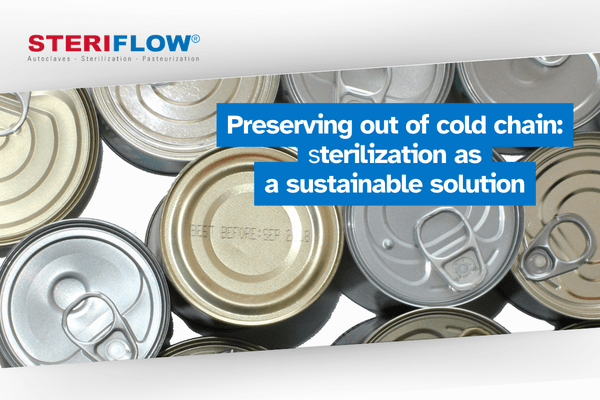Preserving out of cold chain: sterilization as a sustainable solution

In many areas of the world, ensuring cold chain continuity is a true logistical and energy challenge. Irregular access to electricity, weak infrastructure, or the remoteness of consumption areas make refrigerated transport and storage highly problematic.
Yet, many food and medical products require positive cold storage to ensure their safety and efficiency. In this context, alternatives such as industrial sterilization provide an interesting solution for preserving and transporting products at ambient temperature.
Why is the cold chain difficult to maintain?
Major technical and energy constraints
The cold chain relies on maintaining a controlled temperature from production to consumption. While this principle may seem simple, it actually requires a complex logistics system: refrigeration facilities, refrigerated trucks, intermediate storage, continuous monitoring, and more.
In rural or remote areas of many regions of the world, these infrastructures are often absent or unreliable. Power outages, fuel shortages, lack of trained staff, and the high cost of equipment maintenance make the situation even more challenging. As a result, products are at high risk of being exposed to temperature fluctuations that threaten their microbiological stability.
Sterilization: an alternative to refrigeration
Stabilizing the product out of cold
Preserving products outside the cold chain does not mean compromising on safety. On the contrary, it involves stabilizing the product beforehand: sterilization eliminates bacteria, whereas cold storage only temporarily inhibits their growth.
Thermal sterilization by autoclave is a reference technique in both the medical and food sectors. It targets the complete destruction of microorganisms, including spores, through high-temperature thermal treatment.
This approach relies on a holistic design of the product/packaging/process trio, integrating product formulation, the choice of hermetically sealed packaging, and the validation of the thermal treatment cycle.
Which products can be concerned?
Sterilization can damage certain products, particularly those that are heat-sensitive, which is why it cannot be applied systematically. However, it can be perfectly suitable for:
• Prepared meals, sauces, purées, compotes, dairy products… in airtight packaging.
• Ready-to-use therapeutic foods (RUTF) within humanitarian programs.
• Non-heat-sensitive medical devices (solutions in vials or ampoules, compresses, syringes, pre-assembled kits, etc.).
Advantages and limitations of sterilization compared to cold storage
Benefits in challenging areas
• Logistical autonomy: no need for refrigeration during storage and transport.
• Extended shelf life: preservation for several months or even years.
• Simplified distribution: easier in areas without cold infrastructure.
Conditions for success
• Product-process compatibility: some contents are degraded by heat.
• Control of the sterilization cycle: technical validation is essential.
• Initial cost: equipment, training, compliance testing.
• Energy requirement: sterilization itself requires an energy source.
In contexts where the cold chain is difficult to guarantee, industrial sterilization represents a relevant alternative to ensure product safety and shelf life. It does not replace cold storage in all situations, but where conditions allow, it enables efficient preservation at ambient temperature.
Contact our teams to find out how we can support you in your projects.
